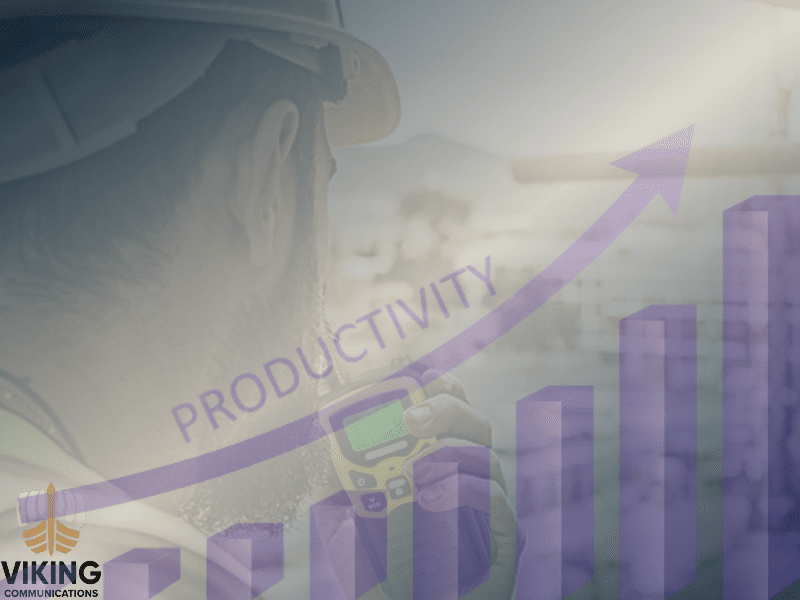Imagine a wireless device that only allows for productive communications. Imagine a wireless device that allows your team to communicate effectively and efficiently virtually anywhere you need. Imagine a wireless communications device that doesn’t support social media, doesn’t allow personal phone calls, doesn’t allow Fruit Ninja, Woordle, or whatever the latest game craze is. Not possible? Yes, it is. Two-way radio is the answer to your team communications needs.
Let’s talk about costs and the ever-sought RoI – Return on Investment. No, two-way radios aren’t free, but a properly designed system, using professional grade equipment, will boost the efficiency and productivity of your team.
Collective Intelligence
The biggest advantage to two-way radio communications is the concept of collective intelligence. Follow me on this example. You are part of a ten (10) person maintenance team tasked with maintaining the facilities and operations of your organization. You go to grab “Tool X” and it’s missing. If you rely on cell phone communications, you have to:
1) grab your cell phone,
2) go to the contacts/phone app on your cellular device,
3) find the name of the contact you want to call,
4) dial wait for the called party to pick up before voicemail kicks in,
5) if they pick up, exchange pleasantries and ask if they know where “Tool X” is.
6) if they don’t know or don’t pick up, hang up and start over with the next contact.
This scenario becomes exacerbated if there are coverage issues, people are on their phones, the cell network is busy/congested, etc. Now multiply the time spent by (potentially) the number of people on your team. You’ll probably have to get a hold of a few people before reaching somebody knows where “Tool X’ is.
Now repeat the scenario with two-way radio:
1) grab the two-way radio,
2) press the PTT (push to talk) button,
3) say, “has anybody seen “Tool X”?”,
4) wait for the response of the person with “Tool X”.
You’ve just contacted all nine (9) of your teammates in four steps, using two-way radio, with literally no more that ten (10) seconds of effort.
Starting to see the RoI value in two-way radio?
Two-Way Radio Ruggedness and Service Life
Professional two-way radios are designed to meet very specific criteria for ruggedness and reliability. MIL-STD-810 is commonly used to evaluate two-way radio equipment. This is an accelerated test performed on the products to simulate the stresses and environment the equipment will see over its service lifetime. Both Kenwood and Hytera design their equipment to be compliant with MIL-STD-810G and test their equipment in accordance with those standards.
Another common rating for two-way equipment is the IP rating – Ingress Protection. It consists of two digits, IPxy, where “x” is a number from 0 → 6 and represents the device’s protection against solid particulates – sand, dust, filings, etc. The “y” is a number from 0 → 10, indicating the device’s protection against water ingress. Again, both Kenwood and Hytera offer equipment that meets IP54, IP55, IP67 and IP68 ratings. IP68 means the device is submersible in water for at least 30 minutes (often longer), at a depth of over three (3) feet, with no ill effect.
With a little care and effort, you can easily expect a service life of five (5) to seven (7) years out of your two way radio. Two-way radio batteries provide rated capacities for about three (3) to five (5) years. Speaker microphones usually last about five (5) years and other audio accessories don’t last quite that long.
Two-way radios can also have their usable service life extended through service and repair. Many of the common points of failure are well known and can be repaired. Kind of like changing the tires on your car – not necessarily a consumable, but designed to be repaired/replaced.
Recurring Fees – not required, your choice
Another huge advantage of two-way radio is the lack of recurring fees in many cases. If you’re looking to cover a building, campus or similar, most of the time you can do this without incurring any recurring fees. You purchase and maintain the equipment and license. Those are your only costs.
You can opt for service that covers metropolitan areas and wider, but that kind of service comes with a monthly recurring fee, as additional infrastructure is required to support communications at those distances.
CONTACT VIKING COMMUNICATIONS!
We have demonstration equipment available for our products and services and are very excited to meet with you and your team to see how we can improve your organization. Contact Viking Communications, we have been in the business since 1964, always maintaining the consistent goal of helping our clients to communicate more effectively and efficiently. We are locally owned and operated, this allows us to provide professional service in two-way communications systems, with a personal approach for each client.

